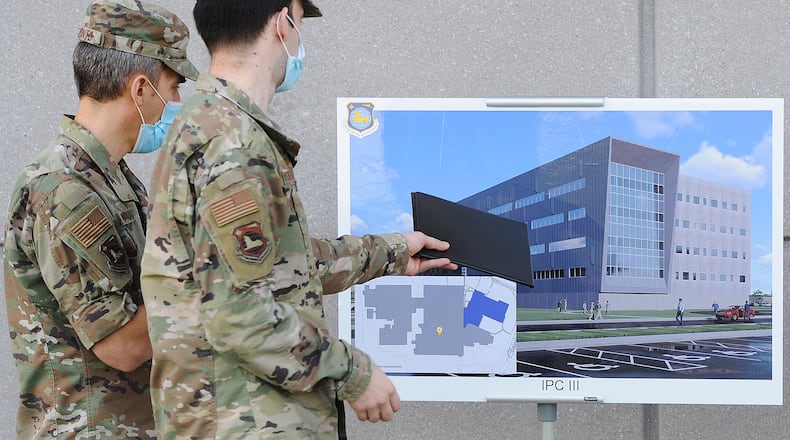Jeff Hoagland, president and chief executive of the coalition, expects the squadrons to remain physically located at Wright-Patterson.
“This announcement confirms it is the Space Force’s intent to keep these squadrons at Wright-Patt,” he said. “We will continue to advocate for the Air Force and Space Force’s intelligence work in the Dayton region and support NASIC’s continued growth.”
Under questioning by U.S. Rep. Mike Turner, R-Dayton, former U.S. Defense Secretary Mark Esper agreed in February this year that it’s important not to duplicate work being performed by NASIC as the fledgling Space Force is created.
“As we look forward to how we organize Space Force, obviously, we’re not looking for reduplication, and I don’t want to break something that’s working,” Esper told the House Armed Services Committee, of which Turner is a member.
President Trump fired Esper Nov. 9. Christopher Miller is acting secretary of defense today.
“This announcement shows Space Force’s understanding of the importance of NASIC’s work, and bodes well for future partnership between WPAFB, NASIC and Space Force," Turner said in a statement from his office Tuesday.
The move is in line with published guidance from the Air Force. The coalition points to the chief of Space Operations' planning guidance document, released recently by Gen. John Raymond, chief of space operations.
“As a focal point for space domain intelligence, we will seek to re-align space-oriented functions of the National Air and Space Intelligence Center to form a co-located National Space Intelligence Center (NSIC),” that document states. “In concert with the Space Force ISR (intelligence, surveillance, and reconnaissance) Enterprise, the NSIC will provide a framework for growth to meet anticipated demand for increased space intelligence at foundational, tactical, operational and strategic levels.”
“Gen. Raymond’s planning guidance states the USSF (U.S. Space Force) will seek to co-locate a future center with NASIC at Wright-Patterson AFB,” noted Michelle Martz, chief of Public and Legislative Affairs for NASIC.
“At stand-up, the National Space Intelligence Center will be comprised of the two squadrons transferring from NASIC,” Martz said in an email to the Dayton Daily News. “They will continue to work side-by-side with their counterparts at NASIC, just as they do today, working together to deliver unique collection, exploitation, and analytic capabilities to the nation. A number of NASIC personnel transferred to the USSF in September, and more will transfer in the coming months.”
Martz also said that NASIC looks forward to “continuing a strong and integrated partnership with the USSF as the service matures its scientific and technical intelligence capabilities in the space domain.”
If Space Force were to concentrate its intelligence operations at a site other than Wright-Patterson, "that would have a significant impact on local employment,” said Loren Thompson, a defense industry analyst and chief operating officer with the Arlington, Va.-based non-profit Lexington Institute.
“However, Space Force remains part of the Department of the Air Force, and it makes little sense to Balkanize intelligence analysis by splitting closely-related operations between different locations,” Thompson told the Dayton Daily News. “The military needs an integrated intelligence operation, non a dis-integrated operation.”
He added: “It’s just an organizational change in the near term. Over the longer term, it might mean more.”
Ground was broken for NASIC’s new home at Wright-Patterson earlier this month.
The five-story Intelligence Production Complex III project, with an estimated price tag of $156 million, will add 255,000 square feet, divided into more than 980 workstations, mission-specific functions, meeting areas, 3D visualization capabilities, conference rooms and such amenities as mothers' rooms, natural light and showers, the Air Force has said.
The addition should be occupied by early 2025.
At the groundbreaking, Col. Maurizio Calabrese, NASIC commander, noted the center’s standing as the operational wing in the Air Force Intelligence, Surveillance and Reconnaissance enterprise and the service intelligence center for the Air Force and U.S. Space Force.
NASIC is tasked with analyzing new air, space, missile, and cyber threats facing the Air Force and Space Force.
About the Author

